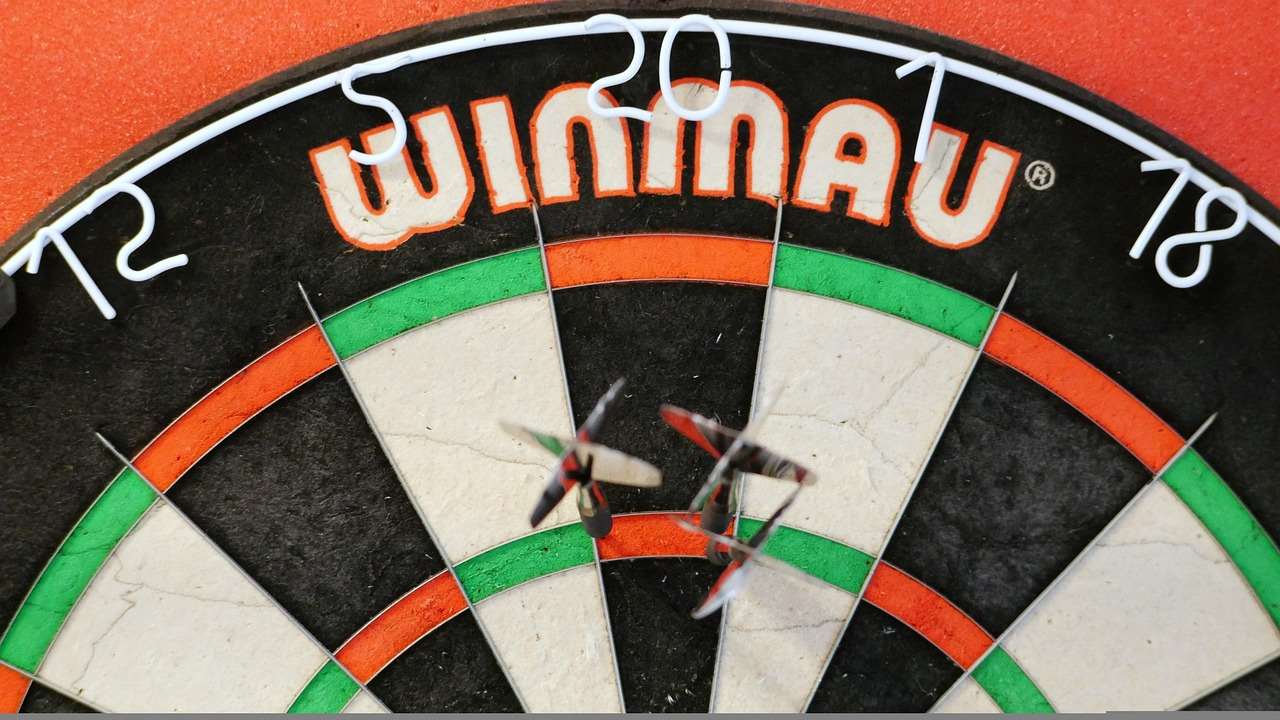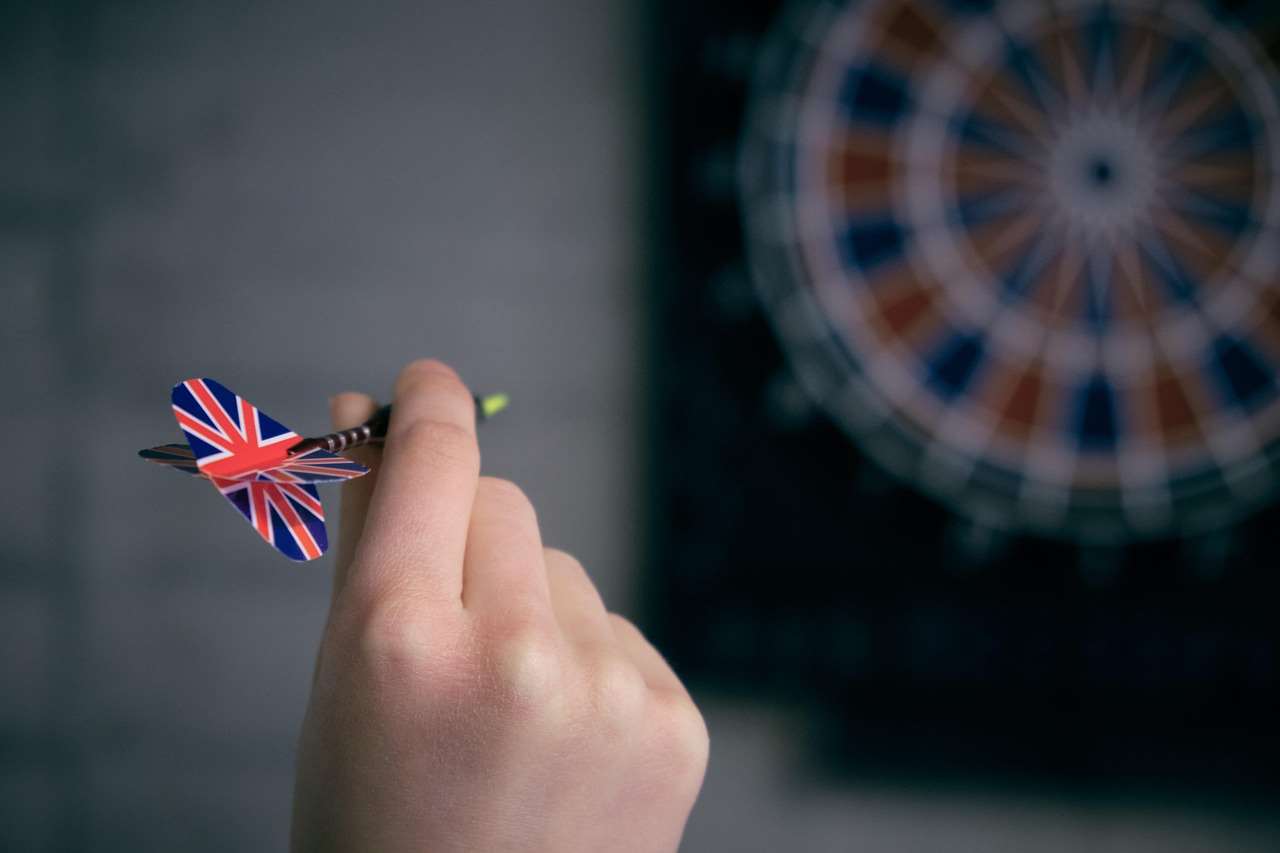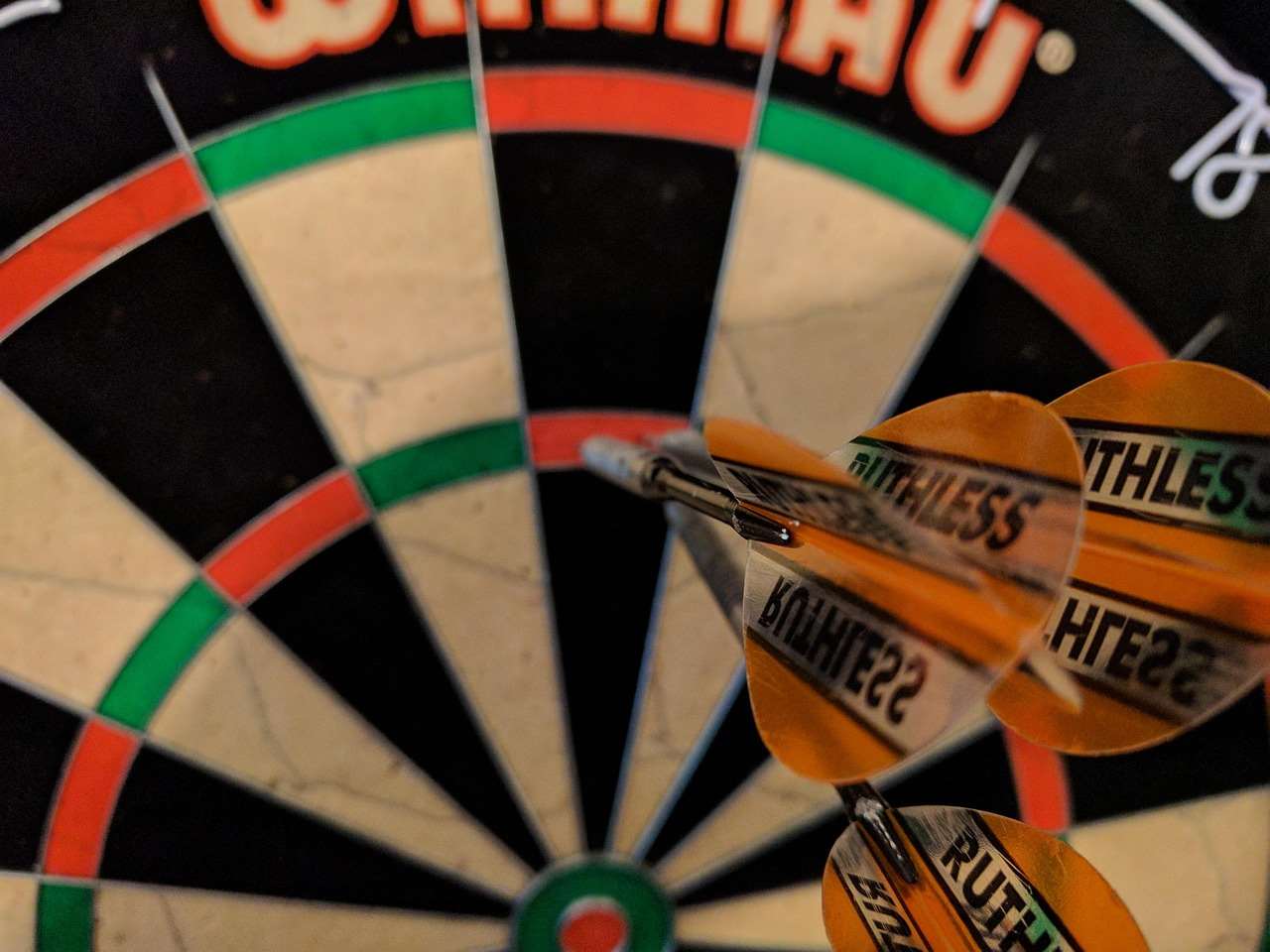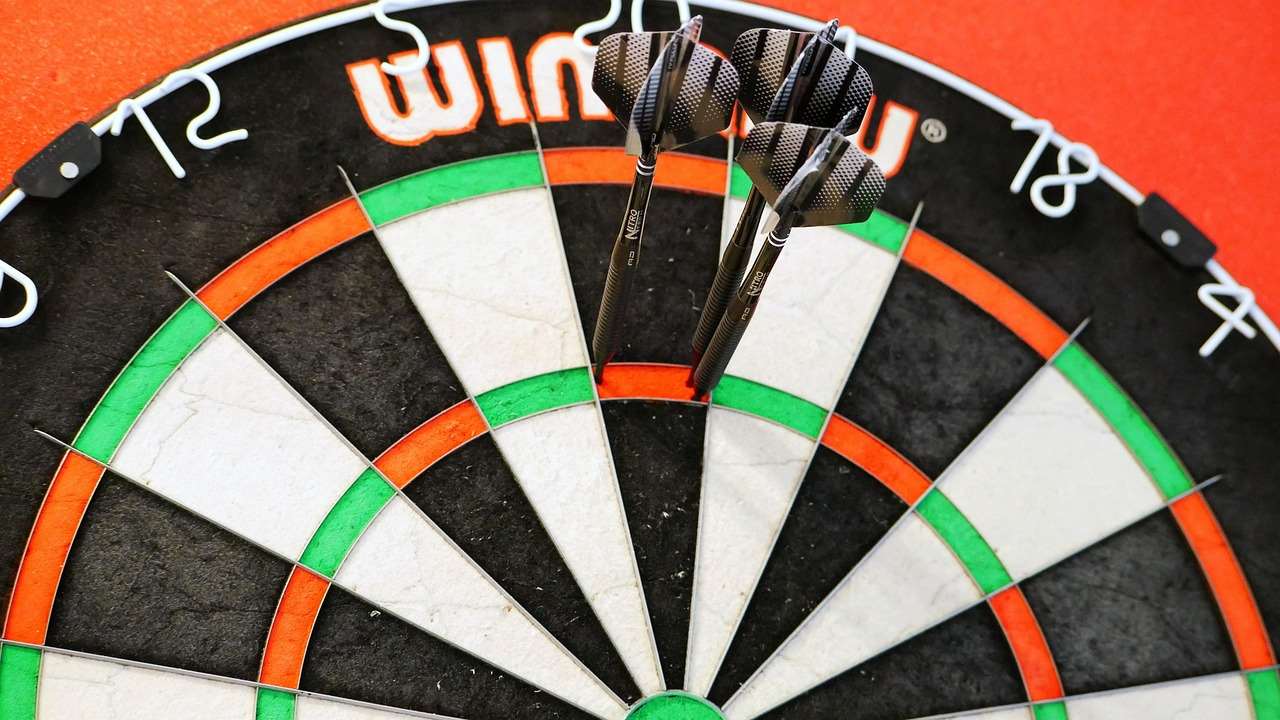Understanding darts termen is crucial for any player looking to improve their game and fully appreciate the sport’s nuances; essentially, it unlocks a deeper understanding of darts. This article will break down essential darts terminology, explain scoring intricacies, and offer tips to elevate your darting skills.
⚠️ Still Using Pen & Paper (or a Chalkboard)?! ⚠️
Step into the future! The Dart Counter App handles all the scoring, suggests checkouts, and tracks your stats automatically. It's easier than you think!
Try the Smart Dart Counter App FREE!Ready for an upgrade? Click above!
Deciphering Darts Termen: A Comprehensive Guide
Whether you’re a seasoned pro or just starting out, familiarizing yourself with the darts termen is essential. This section will delve into the most common and important terms you’ll encounter in the world of darts, ensuring you speak the language of the game fluently.

Basic Darts Terms
- Oche: The throwing line, also known as the toe line. The precise distance from the dartboard is crucial.
- Bullseye: The center of the dartboard, worth 50 points.
- Double: The outer ring of the dartboard; landing a dart here doubles the value of the number.
- Triple: The inner ring of the dartboard; landing a dart here triples the value of the number.
- Single: The main body of the dartboard between the double and triple rings.
- Segment: One of the 20 numbered sections on the dartboard.
- Checkout: The final score required to win a leg or match, usually achieved by hitting a double.
- Leg: A single game of darts, starting from a set score (usually 501) and ending when a player reaches zero with a double.
- Set: A group of legs, typically the best of a certain number of legs.
- Match: The overall contest, typically the best of a certain number of sets or legs.
Advanced Darts Termen
Beyond the basics, there are more nuanced darts termen that experienced players will use. Understanding these can provide a competitive edge and improve communication within the darts community.
- Ton: A score of 100 or more with three darts.
- Ton 40: A score of 140 with three darts.
- Ton 80: The highest possible score with three darts, achieved by hitting three triple 20s. This is often referred to as a “180”.
- Nine-Dart Finish: The quickest possible way to win a leg of 501, requiring nine darts to reach zero.
- Shanghai: Hitting a single, double, and triple of the same number in one turn (e.g., single 20, double 20, triple 20).
- Bed and Breakfast: Hitting a single 20, a single 5, and a single 1, totaling 26.
- Mad House: Needing double one to finish a leg.
Mastering Darts Scoring: From Basics to Advanced Strategies
Understanding how to score correctly is paramount to playing darts. This section breaks down the intricacies of darts scoring, from the simple addition to complex checkout strategies, including those using a Mobile dart scorer to speed up the process.
The Basics of Darts Scoring
Each dart thrown scores points according to the segment it lands in. The numbers around the outside of the dartboard indicate the value of each segment. Hitting the double ring doubles the score, and hitting the triple ring triples the score. The bullseye is worth 50 points, and the outer bull (single bull) is worth 25 points. The objective is usually to reduce a starting score (typically 501 or 301) to zero, ending with a double.
Checkout Strategies
Developing effective checkout strategies is crucial for winning games. Here are some common approaches:
- Knowing your outs: Familiarize yourself with common checkout combinations, such as 32 (double 16), 40 (double 20), and 81 (triple 17, double 15).
- Setting up the finish: Plan your throws to leave yourself with a manageable checkout number.
- Playing the percentages: Choose checkout combinations that offer multiple opportunities to hit the required double.
- Adjusting to your opponent: Adapt your strategy based on your opponent’s scoring and checkout attempts.
Essential Equipment: Choosing the Right Darts and Dartboard
Having the right equipment can significantly impact your performance. This section discusses the key factors to consider when choosing darts and dartboards to suit your playing style.
Choosing Your Darts
Selecting the right darts is a personal decision based on individual preferences and playing style. Consider the following factors:
- Weight: Darts typically range from 18 to 30 grams. Lighter darts may be easier to throw consistently, while heavier darts can offer more stability.
- Grip: Experiment with different grip types (smooth, knurled, ringed) to find one that provides a comfortable and secure hold.
- Material: Tungsten darts are more durable and offer a slimmer profile than brass darts.
- Shape: Different dart shapes (straight barrel, torpedo, bomb) can affect the dart’s flight characteristics.
Selecting a Dartboard
The quality of your dartboard also plays a crucial role in your game. Look for these features:
- Material: Sisal fiber boards are the most durable and self-healing.
- Wiring: Thin wiring reduces bounce-outs and improves scoring accuracy.
- Construction: Look for a board with a consistent density and a well-defined bullseye.
- Rotation: Choose a rotatable board to distribute wear evenly and prolong its lifespan.

Improving Your Game: Tips and Techniques for Dart Players
Improving your darts game requires dedication, practice, and a strategic approach. This section offers valuable tips and techniques to help you elevate your skills and achieve your darting goals. Knowing common phrases and darts termen is only one step!
Stance and Grip
Developing a consistent stance and grip is fundamental to accurate throwing.
- Stance: Stand comfortably at the oche with one foot forward and your weight balanced.
- Grip: Hold the dart with a relaxed grip, using your thumb and index finger for control.
- Alignment: Ensure your body is aligned with the target, with your throwing arm pointing directly towards the desired segment.
Throwing Technique
Refining your throwing technique will improve your accuracy and consistency.
- Arm movement: Keep your upper arm still and focus on using your forearm and wrist to generate power.
- Release point: Release the dart smoothly and consistently at the same point in each throw.
- Follow-through: Follow through with your arm after releasing the dart, pointing towards the target.
Practice Drills
Regular practice drills can help you develop specific skills and improve your overall game.
- Target practice: Focus on hitting specific numbers and doubles.
- Checkout drills: Practice common checkout combinations.
- Grouping practice: Aim to throw three darts into the same segment.
Common Mistakes and How to Avoid Them
Even experienced dart players make mistakes. Identifying and correcting these errors can significantly improve your performance. Understanding the proper darts termen is just the beginning; execution is key. We’ll explore common pitfalls in your darts journey and offer solutions to avoid them.

Grip Issues
- Death Grip: Holding the dart too tightly can lead to erratic throws. Solution: Relax your grip and let the dart flow naturally.
- Inconsistent Grip: Changing your grip between throws can cause inconsistency. Solution: Develop a consistent grip and stick with it.
Stance Problems
- Poor Balance: Leaning too far forward or backward can affect your stability. Solution: Distribute your weight evenly and maintain a balanced stance.
- Inconsistent Stance: Changing your foot position between throws can lead to inconsistency. Solution: Establish a consistent stance and maintain it throughout your game.
Throwing Errors
- Jerky Motion: Using a jerky or forced throwing motion can reduce accuracy. Solution: Use a smooth, fluid throwing motion.
- Not Following Through: Failing to follow through with your arm can lead to inconsistent releases. Solution: Extend your arm towards the target after releasing the dart.
The Mental Game of Darts: Focus and Concentration
Darts is not just a physical game; it also requires mental fortitude. Developing your mental game can help you stay focused, manage pressure, and perform at your best, even when learning all the darts termen.
Staying Focused
Maintaining focus is essential for consistent performance.
- Visualization: Visualize your dart hitting the target before each throw.
- Breathing techniques: Use deep breathing exercises to calm your nerves and improve concentration.
- Positive self-talk: Encourage yourself with positive affirmations.
Managing Pressure
Learning to manage pressure is crucial for performing well in competitive situations.
- Acceptance: Accept that you will make mistakes and don’t dwell on them.
- Focus on the process: Focus on your technique and strategy rather than the outcome.
- Stay in the present: Don’t let past throws or future scenarios distract you.
Darts Etiquette and Rules: Playing with Respect
Understanding the rules of darts and practicing good etiquette ensures a fair and enjoyable game for everyone. While knowing darts termen helps with communication, respecting the game is equally important. This section outlines the essential rules and etiquette guidelines.
Basic Rules
- Throwing Order: The throwing order is determined by a coin toss or a bullseye challenge.
- Scoring: Scores are calculated according to the position of the darts on the dartboard.
- Leg Start: A leg typically starts from a score of 501 or 301.
- Checkout: To win a leg, a player must reach zero with a double.
- Foul Line: Players must stand behind the oche when throwing.

Etiquette Guidelines
- Respectful Behavior: Show respect for your opponents and their playing style.
- Quiet During Throws: Avoid making noise or distractions while others are throwing.
- Dartboard Awareness: Be mindful of your surroundings and avoid standing too close to the dartboard when others are throwing.
- Scorekeeping: Keep accurate scores and announce them clearly.
- Sportsmanship: Win or lose, maintain a positive attitude and congratulate your opponents on a good game.
Exploring Different Darts Games and Variations
Beyond the standard 501 and 301 games, there are numerous darts games and variations to explore. Experimenting with different formats can add variety to your practice sessions and challenge your skills. Understanding darts termen becomes even more valuable as you explore these variations.
Common Darts Games
- 501/301: The most popular darts games, starting from 501 or 301 and ending with a double.
- Cricket: A strategic game where players must close out specific numbers before their opponents.
- Around the Clock: Players must hit each number on the dartboard in sequence, from 1 to 20.
- Shanghai: Players must hit a single, double, and triple of the same number in one turn.
Creative Variations
- Killer: Players each choose a number and must hit it three times to become a “killer”. They can then target other players’ numbers to eliminate them.
- Golf: Each round represents a hole, and players must hit the corresponding number to score par.
The Future of Darts: Technology and Innovation
The world of darts is constantly evolving, with technology and innovation playing an increasingly important role. From online dartboards to advanced scoring systems, these advancements are changing how the game is played and experienced. This includes mobile apps that provide instant access to darts termen.

Smart Dartboards
Smart dartboards feature built-in sensors that automatically track scores and provide real-time feedback. This eliminates the need for manual scoring and allows players to focus on their game.
Online Darts Platforms
Online darts platforms enable players to compete against opponents from around the world. These platforms often include features such as video conferencing, automated scoring, and league management.
Dart Analysis Software
Dart analysis software uses data to track your performance and identify areas for improvement. This software can analyze your throwing technique, scoring patterns, and checkout strategies.
Conclusion
Mastering the darts termen is just the first step in your journey to becoming a skilled darts player. By understanding the language of the game, refining your technique, and developing your mental game, you can elevate your performance and achieve your darting goals. Remember to choose the right equipment, practice regularly, and always maintain a positive attitude. Ready to take your darts game to the next level? Explore your local darts scene, join a league, and start practicing those checkout combinations today! Consider checking out new dart releases to stay up-to-date with the latest equipment.
Hi, I’m Dieter, and I created Dartcounter (Dartcounterapp.com). My motivation wasn’t being a darts expert – quite the opposite! When I first started playing, I loved the game but found keeping accurate scores and tracking stats difficult and distracting.
I figured I couldn’t be the only one struggling with this. So, I decided to build a solution: an easy-to-use application that everyone, no matter their experience level, could use to manage scoring effortlessly.
My goal for Dartcounter was simple: let the app handle the numbers – the scoring, the averages, the stats, even checkout suggestions – so players could focus purely on their throw and enjoying the game. It began as a way to solve my own beginner’s problem, and I’m thrilled it has grown into a helpful tool for the wider darts community.